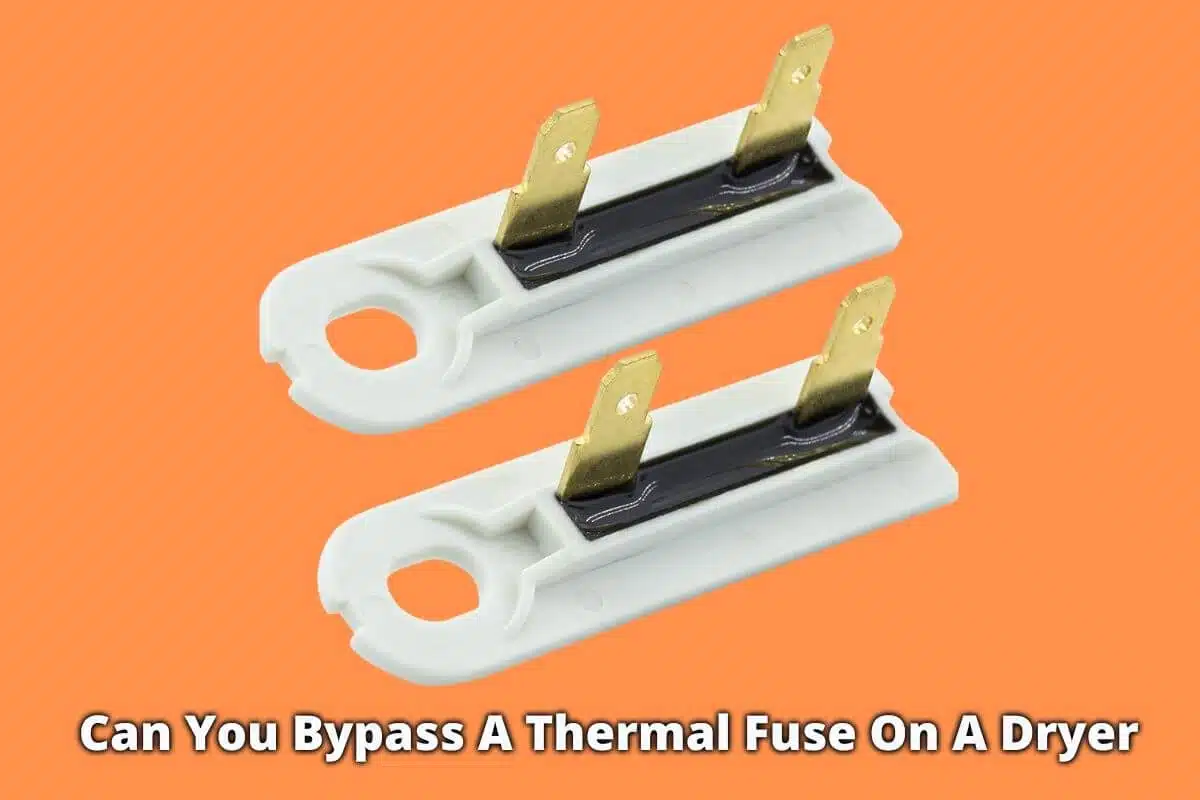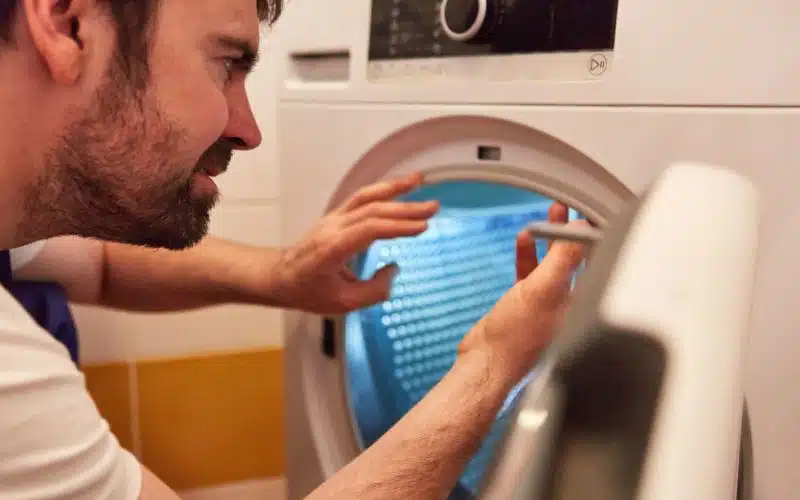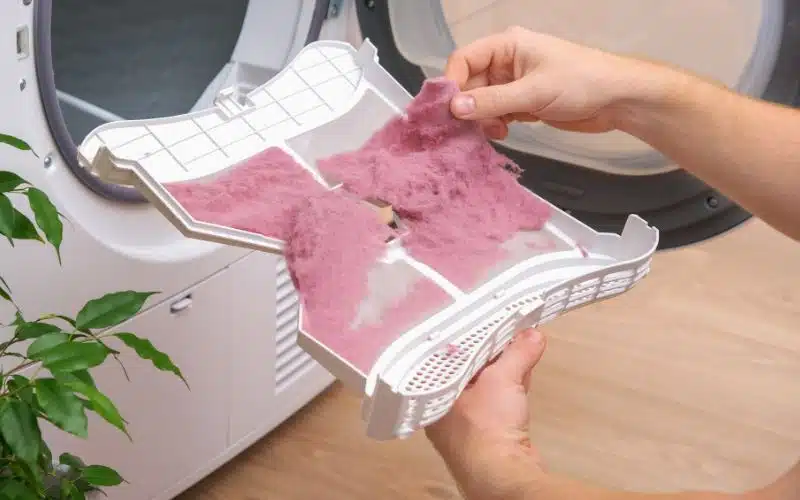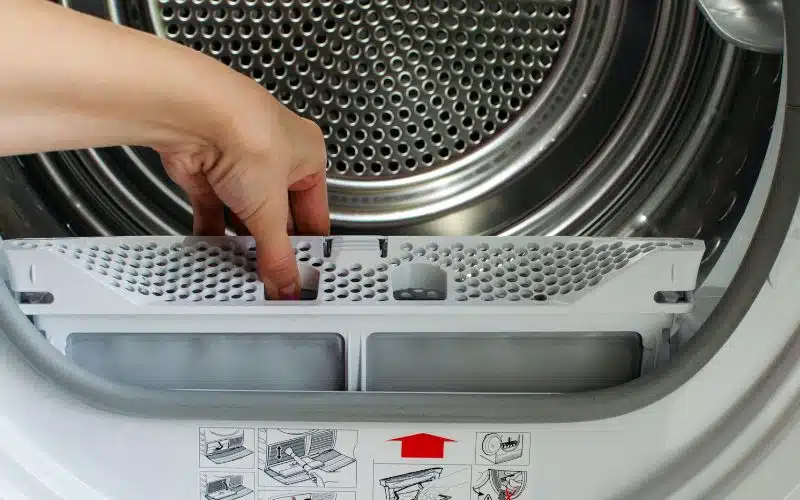Bypassing a dryer’s thermal fuse can seem like a quick fix when it’s not working right.
But is this shortcut safe, or could it be a risky move? Let’s dive in and find out what happens when you decide to skip this small but crucial part of your dryer.
No, bypassing a dryer’s thermal fuse is not a safe, long-term solution. The thermal fuse serves as a critical safety component, designed to protect your dryer from overheating and prevent potential fire hazards. Instead of bypassing, it’s crucial to replace a faulty thermal fuse promptly. Unlike regular fuses, thermal fuses offer specialized protection for dryers, making them an indispensable part of safe and effective dryer operation.

How To Bypass Thermal Fuse On Dryer?
Bypassing a thermal fuse in a dryer is simple. First, unplug the dryer. Then, find and open the right panel. Look for a metal strip – that’s the thermal fuse. Now, you can bypass it.
#1. Disconnect the dryer from the mains and find the right panel.
Before starting, ensure you have disconnected the power to your dryer. This is a crucial safety step.
You need to find the thermal fuse, and it’s usually located behind the kick panel or rare panel of your dryer.
Check your dryer’s manual to find the exact location for your specific model.
- Unplug the dryer from the electrical outlet or turn off the circuit breaker.
- Use a flathead screwdriver or your hands to remove the kick panel.
- Look for a metal strip – this is the thermal fuse.
#2. Overcome the thermal fuse
Once you’ve located the thermal fuse, it’s time to bypass it. Use electrical tape to connect the two ends of the thermal fuse together.
This process temporarily bypasses the fuse’s function.
- Cut a piece of electrical tape.
- Tape the two wire ends of the thermal fuse together securely.
If your dryer operates warmer than usual after bypassing the fuse, it indicates that the fuse was defective.
Remember, you should replace the fuse with a new one as soon as possible. Bypassing the fuse is only a temporary fix and not a long-term solution.
What Happens If You Bypass The Thermal Fuse On A Dryer?
Bypassing the thermal fuse in your dryer can be unsafe. Here’s what might happen without this safety device:
- Increased Fire Risk: Your dryer could overheat, potentially starting a fire.
- Loss of Protection: The thermal fuse acts as a safeguard against overheating. Without it, you’re exposing your home to danger.
Remember, a thermal fuse helps stop fires. It’s a safety feature for a reason. Rather than bypassing it, consider replacing a blown fuse.
Last update on 2024-01-10 / Affiliate links / Images from Amazon Product Advertising API
Are Thermal Fuses Necessary For Dryer?
Thermal fuses are critical safety devices in your dryer. They detect too much heat and work to keep you safe.
If the dryer gets too hot, the thermal fuse stops electricity from reaching the appliance. This action cuts power, helping to prevent potential fires.
Your dryer needs a thermal fuse for several reasons:
- Protection from Overheating: Thermal fuses ensure your dryer doesn’t get too hot. They act fast to stop heat before it becomes a danger.
- Automatic Power Cut-Off: When temperatures spike, these fuses break the circuit. This means they stop power right away to avoid hazards.
How thermal fuses work is pretty straightforward:
- Detect high temperatures.
- Melt or break to open the circuit.
- Automatically shut off power to your dryer.
In your home, thermal fuses are like guardians:
- Circuit Breaker Box: You’ll find them here, watching over the electricity that flows to your machines.
- Immediate Response: At any sign of overheating, they react. They cut the power to keep you and your home safe.
Prevention of Fires is another big job of thermal fuses:
- They block arc faults, which can happen if too much electricity runs through a wire.
- Arc faults can cause electricity to jump and start a fire. Thermal fuses prevent that risk by shutting down the power.
Can You Replace A Thermal Fuse With A Regular Fuse?
When dealing with electrical appliances, safety is key. It’s important to know the difference between a thermal fuse and a regular fuse.
A thermal fuse is a one-time use device that responds to temperature, while a regular fuse reacts to excessive current.
| Thermal Fuse | Regular Fuse |
|---|---|
| Activates due to high temperature | Trips with high electrical current |
| Cannot be reset after triggering | Can often be replaced or reset |
| Designed to prevent fires | Protects against overcurrent |
You should not replace a thermal fuse with a regular one because a regular fuse will not offer the same protection.
Thermal fuses are unique; they melt and break the circuit if it gets too hot, in order to prevent potential fires.
If a circuit gets hotter than about 220 degrees Fahrenheit (100 degrees Celsius), the thermal fuse will act.
Signs you need to replace a thermal fuse:
- Your appliance won’t turn on or lacks heat
- Visible damage to the fuse itself
- Evidence of electrical issues like sparks
Remember, a thermal fuse must be replaced if it’s been triggered. Regular fuses cannot substitute for this, as they operate based on a different principle.
Using a regular fuse would mean waiting 30 minutes after a fault before safely attempting to use the circuit again, and even then, you risk electrical fire.
Your best action is to replace the thermal fuse with a new one. This ensures your appliance continues to operate safely and effectively.
Regularly check for the mentioned signs to know when it’s time for a change. If in doubt, seek professional advice to keep your home safe.






